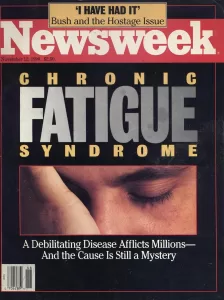In early 2011, at the age of 23, I woke up one day permanently disabled.
Suddenly, basic activities like walking up a flight of stairs left me out of breath. I could no longer read without quickly fatiguing beyond the point of reading comprehension. From a happy young woman, I became functionally elderly. I slept 12-14 hours a day for the next six months. Within a year, I was housebound. I spent periods bedbound. I couldn’t work any job you could name.
Without my family’s support, simply put, I wouldn’t have survived this long.
This is the ruin of the disease I was diagnosed with two years after contracting it – Chronic Fatigue Syndrome (CFS).
It was only after seven years, with the aid of testing done at Camden Whole Health, that we determined that the house I moved into in 2010 had a mold issue – as, now, do I. This can trigger CFS, as well as certain viruses including Epstein Barr Virus (EBV) and Lyme Disease.
As I continue to inch towards recovery, Long Covid’s long fingers have left 6-11% of the world’s post-Covid adults, or 20 million Americans, with lasting fatigue, insomnia, depression, post-exertional malaise, and other classic hallmarks of Chronic Fatigue Syndrome.
This disease – whether referred to as CFS, Long Covid, or post-viral fatigue, is ruinous in its depletion of vital energy required to perform essential tasks. Researchers estimate the annual global cost of Long Covid to be 1 trillion dollars.
The response? In 2021, the National Institutes of Health was seeded with some $1.15 billion dollars, with an additional $515 million dollars added this year. This is a remarkable sum considering the NIH is only funded with roughly $13 million dollars annually for CFS research.

While this is likely the most hopeful moment in CFS history since public awareness of it exploded in the 80s, there have yet to be any substantial findings. Researchers involved with these studies relate that they are seemingly focusing on fundamentals of understanding the disease, when to the community who have lived this for decades, there is a frustration that we seem to be paddling in the same shallow pool.
If larger studies facilitated by that mouth-watering sum finally establish the nature of post-viral fatigue, one hopes they may at least serve as the basis of broad education for medical students, because as an unwilling member of the CFS cohort, it’s evident that almost no doctors are learning about this prevalent and severe malady in school.
In the meantime, CFSers aren’t holding their breath. So long as the allopathic medical community offers little more than antidepressants to the housebound and bedbound, we’ll search for solutions wherever they can be found.
